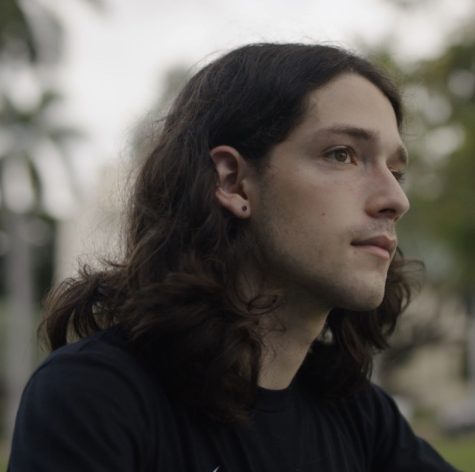Do you ever feel like you’re being watched? Facial recognition surveillance might be one reason why.
The Electronic Frontier Foundation defines facial recognition as “a method of identifying or verifying the identity of an individual using their face.” To put it simply, when a computer program compares an image of someone’s face with a database of other photos and tries to find a match, that’s facial recognition. This rapidly developing technology represents security and convenience to some and dangerous risk to others, and now it might be coming to a campus near you.
Facial recognition technology plays a role in the lives of many people, from the Face ID feature on Apple phones to the massive surveillance databases operated by police forces and federal law enforcement agencies. It’s also both relatively new and deeply contentious, sparking concerns about privacy and legality from groups like Fight for the Future and the American Civil Liberties Union. Government officials, lawyers, and academics have spoken publicly about their reservations. In 2019, the National Institute of Standards and Technology reported that many facial recognition algorithms which are considered cutting-edge in the tech field misidentify the faces of Black and Asian people between 10 and 100 times more often than those of white people.
More recently, a report from the Ford School of Public Policy at the University of Michigan strongly recommended an outright ban on the use of facial recognition in schools. A summary graphic on the report website states that school use of the technology “is racist, punishes nonconformity, is inaccurate, brings state surveillance into the classroom, [and allows companies to] profit from children’s personal data.” Harvard, Brown, MIT, and Yale are on a list of colleges that have implemented policies to prohibit the use of facial recognition technology on their campuses.
Still, the allure of this technology for safety and security is strong enough that some schools are choosing to use it. The Broward County school district in Florida (which includes Marjory Stoneman Douglas High School, the site of the Parkland shooting) has been implementing facial recognition along with other tools that can track people without directly identifying them based on clothing and physical features. The ACLU sued the New York State Education Department in June of this year for allowing public schools in Lockport County to implement facial recognition technology. Just last month, the University of Miami was accused of using facial recognition technology to track down student protesters. The university denies the accusation, but has struggled to explain what happened; it remains unclear whether some form of computerized surveillance was used.
In the midst of this controversy, conversations about facial recognition and other security technologies are happening here at Punahou School. “We want to keep our campus and our community as safe as possible, and we don’t want to make a mistake like the ones you’re reading about,” says Academy Assistant Principal James Kakos. “We’re balancing safety with the overall culture of Punahou, and hoping we can accomplish both.”
School President Michael Latham stated that there are currently no plans to use facial recognition at Punahou, writing that “we are seeking to improve the security of our campus using a range of other, more ethically sound practices.” According to Latham, as well as Chief Information Officer Jim LaClair, the school is currently moving in that direction by planning to install new security cameras with a built-in object recognition system. If someone was hopping a fence, the new cameras could flag it and send an alert to security staff, LaClair says. The system could also differentiate between humans and animals: a person walking onto campus at night might trigger an alert, but a mongoose or feral cat wouldn’t. This infrastructure will not be capable of automatically tracking people’s movements across the campus, nor will it analyze a person’s physical features. “It’s still not intrusive, but it’s also much more vigilant than what we have now,” LaClair explained.
More plans are being explored for the future, including a centralized “command center” and alert apps for students to contact campus security, but none of them involve facial recognition. “I don’t know that there’s a lot of use cases for facial recognition at Punahou,” explained Beau Monday, the school’s Chief Information Security Officer. Even if there was a compelling reason to use it, Academy Principal Emily McCarren shared that she thinks “we can solve those problems in other ways,” adding that “sometimes things that increase security decrease privacy, and we try to be really careful about those trade-offs.”
Dr. McCarren isn’t alone in her concerns about the effects of facial recognition and other surveillance on privacy and the school’s culture. “It’s not about trying to catch you, it’s about trying to support you,” said Todd Funasaki, Director of Technology Services. “If we ever crossed that line… It’s a line you can’t uncross.”
As facial recognition moves into the mainstream and activists express concern, schools around the world are trying to chart a course that ensures the safety of students and employees without becoming invasive. Punahou is no exception. “A lot of this, in my view, reflects the fact that we’re a school,” President Latham says. “We want to act in a way that’s going to be supportive and help students learn and grow.”


